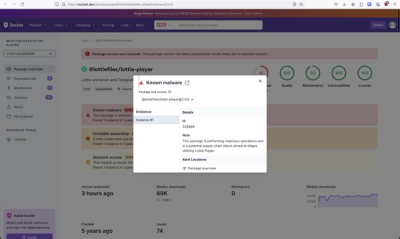




CSSO (CSS Optimizer) is a CSS minifier. It performs three sort of transformations: cleaning (removing redundant), compression (replacement for shorter form) and restructuring (merge of declarations, rulesets and so on). As a result your CSS becomes much smaller.


Ready to use
Install
npm install csso
API
Basic usage:
var csso = require('csso');
var minifiedCss = csso.minify('.test { color: #ff0000; }').css;
console.log(minifiedCss);
CSSO is based on CSSTree to parse CSS into AST, AST traversal and to generate AST back to CSS. All CSSTree API is available behind syntax field. You may minify CSS step by step:
var csso = require('csso');
var ast = csso.syntax.parse('.test { color: #ff0000; }');
var compressedAst = csso.syntax.compress(ast).ast;
var minifiedCss = csso.syntax.generate(compressedAst);
console.log(minifiedCss);
Warning: CSSO uses early versions of CSSTree that still in active development. CSSO doesn't guarantee API behind syntax field or AST format will not change in future releases of CSSO, since it's subject to change in CSSTree. Be careful with CSSO updates if you use syntax API until this warning removal.
minify(source[, options])
Minify source CSS passed as String.
var result = csso.minify('.test { color: #ff0000; }', {
restructure: false,
debug: true
});
console.log(result.css);
Returns an object with properties:
Options:
-
sourceMap
Type: Boolean
Default: false
Generate a source map when true.
-
filename
Type: String
Default: '<unknown>'
Filename of input CSS, uses for source map generation.
-
debug
Type: Boolean
Default: false
Output debug information to stderr.
-
beforeCompress
Type: function(ast, options) or Array<function(ast, options)> or null
Default: null
Called right after parse is run.
-
afterCompress
Type: function(compressResult, options) or Array<function(compressResult, options)> or null
Default: null
Called right after syntax.compress() is run.
-
Other options are the same as for syntax.compress() function.
minifyBlock(source[, options])
The same as minify() but for list of declarations. Usually it's a style attribute value.
var result = csso.minifyBlock('color: rgba(255, 0, 0, 1); color: #ff0000');
console.log(result.css);
syntax.compress(ast[, options])
Does the main task – compress an AST. This is CSSO's extension in CSSTree syntax API.
NOTE: syntax.compress() performs AST compression by transforming input AST by default (since AST cloning is expensive and needed in rare cases). Use clone option with truthy value in case you want to keep input AST untouched.
Returns an object with properties:
- ast
Object – resulting AST
Options:
-
restructure
Type: Boolean
Default: true
Disable or enable a structure optimisations.
-
forceMediaMerge
Type: Boolean
Default: false
Enables merging of @media rules with the same media query by splitted by other rules. The optimisation is unsafe in general, but should work fine in most cases. Use it on your own risk.
-
clone
Type: Boolean
Default: false
Transform a copy of input AST if true. Useful in case of AST reuse.
-
comments
Type: String or Boolean
Default: true
Specify what comments to leave:
'exclamation' or true – leave all exclamation comments (i.e. /*! .. */)'first-exclamation' – remove every comment except first onefalse – remove all comments
-
usage
Type: Object or null
Default: null
Usage data for advanced optimisations (see Usage data for details)
-
logger
Type: Function or null
Default: null
Function to track every step of transformation.
Source maps
To get a source map set true for sourceMap option. Additianaly filename option can be passed to specify source file. When sourceMap option is true, map field of result object will contain a SourceMapGenerator instance. This object can be mixed with another source map or translated to string.
var csso = require('csso');
var css = fs.readFileSync('path/to/my.css', 'utf8');
var result = csso.minify(css, {
filename: 'path/to/my.css',
sourceMap: true
});
console.log(result);
console.log(result.map.toString());
Example of generating source map with respect of source map from input CSS:
var require('source-map');
var csso = require('csso');
var inputFile = 'path/to/my.css';
var input = fs.readFileSync(inputFile, 'utf8');
var inputMap = input.match(/\/\*# sourceMappingURL=(\S+)\s*\*\/\s*$/);
var output = csso.minify(input, {
filename: inputFile,
sourceMap: true
});
if (inputMap) {
output.map.applySourceMap(
new SourceMapConsumer(inputMap[1]),
inputFile
)
}
console.log(
output.css +
'/*# sourceMappingURL=data:application/json;base64,' +
new Buffer(output.map.toString()).toString('base64') +
' */'
);
Usage data
CSSO can use data about how CSS is used in a markup for better compression. File with this data (JSON) can be set using usage option. Usage data may contain following sections:
blacklist – a set of black lists (see Black list filtering)tags – white list of tagsids – white list of idsclasses – white list of classesscopes – groups of classes which never used with classes from other groups on the same element
All sections are optional. Value of tags, ids and classes should be an array of a string, value of scopes should be an array of arrays of strings. Other values are ignoring.
White list filtering
tags, ids and classes are using on clean stage to filter selectors that contain something not in the lists. Selectors are filtering only by those kind of simple selector which white list is specified. For example, if only tags list is specified then type selectors are checking, and if all type selectors in selector present in list or selector has no any type selector it isn't filter.
ids and classes are case sensitive, tags – is not.
Input CSS:
* { color: green; }
ul, ol, li { color: blue; }
UL.foo, span.bar { color: red; }
Usage data:
{
"tags": ["ul", "LI"]
}
Resulting CSS:
*{color:green}ul,li{color:blue}ul.foo{color:red}
Filtering performs for nested selectors too. :not() pseudos content is ignoring since the result of matching is unpredictable. Example for the same usage data as above:
:nth-child(2n of ul, ol) { color: red }
:nth-child(3n + 1 of img) { color: yellow }
:not(div, ol, ul) { color: green }
:has(:matches(ul, ol), ul, ol) { color: blue }
Turns into:
:nth-child(2n of ul){color:red}:not(div,ol,ul){color:green}:has(:matches(ul),ul){color:blue}
Black list filtering
Black list filtering performs the same as white list filtering, but filters things that mentioned in the lists. blacklist can contain the lists tags, ids and classes.
Black list has a higher priority, so when something mentioned in the white list and in the black list then white list occurrence is ignoring. The :not() pseudos content ignoring as well.
* { color: green; }
ul, ol, li { color: blue; }
UL.foo, li.bar { color: red; }
Usage data:
{
"blacklist": {
"tags": ["ul"]
},
"tags": ["ul", "LI"]
}
Resulting CSS:
*{color:green}li{color:blue}li.bar{color:red}
Scopes
Scopes is designed for CSS scope isolation solutions such as css-modules. Scopes are similar to namespaces and define lists of class names that exclusively used on some markup. This information allows the optimizer to move rules more agressive. Since it assumes selectors from different scopes don't match for the same element. This can improve rule merging.
Suppose we have a file:
.module1-foo { color: red; }
.module1-bar { font-size: 1.5em; background: yellow; }
.module2-baz { color: red; }
.module2-qux { font-size: 1.5em; background: yellow; width: 50px; }
It can be assumed that first two rules are never used with the second two on the same markup. But we can't say that for sure without a markup review. The optimizer doesn't know it either and will perform safe transformations only. The result will be the same as input but with no spaces and some semicolons:
.module1-foo{color:red}.module1-bar{font-size:1.5em;background:#ff0}.module2-baz{color:red}.module2-qux{font-size:1.5em;background:#ff0;width:50px}
With usage data CSSO can produce better output. If follow usage data is provided:
{
"scopes": [
["module1-foo", "module1-bar"],
["module2-baz", "module2-qux"]
]
}
The result will be (29 bytes extra saving):
.module1-foo,.module2-baz{color:red}.module1-bar,.module2-qux{font-size:1.5em;background:#ff0}.module2-qux{width:50px}
If class name isn't mentioned in the scopes it belongs to default scope. scopes data doesn't affect classes whitelist. If class name mentioned in scopes but missed in classes (both sections are specified) it will be filtered.
Note that class name can't be set for several scopes. Also a selector can't have class names from different scopes. In both cases an exception will thrown.
Currently the optimizer doesn't care about changing order safety for out-of-bounds selectors (i.e. selectors that match to elements without class name, e.g. .scope div or .scope ~ :last-child). It assumes that scoped CSS modules doesn't relay on it's order. It may be fix in future if to be an issue.








